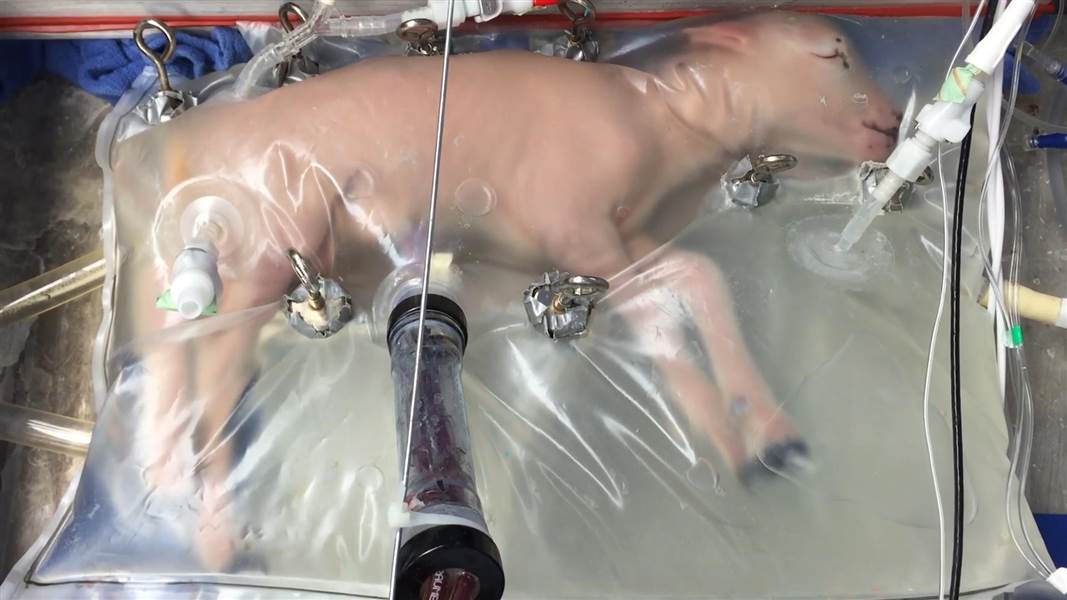Researchers at the Children’s Hospital of Philadelphia have developed an artificial womb that has successfully developed a young lamb. This is all part of a bigger plan, which is to someday save human babies born prematurely.
The device dubbed the “Biobag” is the first of its kind, and comes incredibly close to the watery incubation environment that an actual womb would offer. “What we tried to do is develop a system that mimics the environment of the womb as closely as possible,” said Alan Flake, a fetal surgeon who led the research at the hospital. “It’s basically an artificial womb.” A study published Tuesday that involved eight animals detailed how the device is effective at enabling premature fetuses to develop naturally.
Prematurity is the leading cause of death for newborns, with 10 percent of babies in the U.S. being born premature (that is, before the 37th week of pregnancy). While the Biobag is still years away from being implemented on humans, this would help give premature babies more than simply a fighting chance. The Biobag’s purpose is to allow a fetus to continue developing in a womb-like environment until it’s healthy enough to meet the world.
A baby born prematurely requires intensive support as he/she continues to develop outside their mother’s womb and often needs mechanical ventilation, extra medications, and IVs that provide nutrition and fluids. Those who leave the neonatal intensive care unit often still suffer from health conditions that sprung up because of their stunted development.
For decades, scientists have been trying to develop an artificial womb that would nurture premature babies. Developing a device that can re-create the intricate circulatory system that connects mother to fetus proved to be a major roadblock, though.
With the Biobag, it looks like that obstacle has finally been conquered. The device looks like a clear plastic bag filled with fluid and various tubes running in and out of it. The tubes all serve the purpose of pumping in and out fluids and oxygen, recreating that circulatory system. This simulates how a fetus would float in amniotic fluid inside the mother’s uterus. A mechanical placenta keeps blood oxygenated.

The team conducted their study on the Biobag with lambs and found it “uniquely awe-inspiring”, according to Dr. Emily Partridge, a CHOP research fellow and co-author of the study. “Over four weeks we see that fetus open its eyes, grow wool, breathe, swim.”
How the System Works
Premature lambs were delivered by C-section and swiftly placed into their temperature-controlled bag that was filled with a substitute for amniotic fluid, which they swallow and take into their lungs. Researchers then attached the umbilical cord to a machine that exchanged carbon dioxide in blood with oxygen – just how a placenta would. The lamb’s heart circulates the blood without the need for an additional pump.
Out of the eight lambs used in the study, five had a biological age that was equivalent to 23-week human preemies, and the three others were a little older. They all appeared to grow normally with few complications during the four weeks they were inside the device, though they were later euthanized so that the team could study their organ development. The lungs and brains are the organs most vulnerable to damage in premature babies, and the researchers found that organs of the lambs were undamaged and looked just as they should had they developed in the womb of their mother.
Obviously, the brain of a sheep and the brain of a human develop very differently, and the authors of the study acknowledge that a lot more research is needed. Still, it’s both comforting and exciting to think that future children might be able to avoid the long-term health problems that can arise from premature birth.

